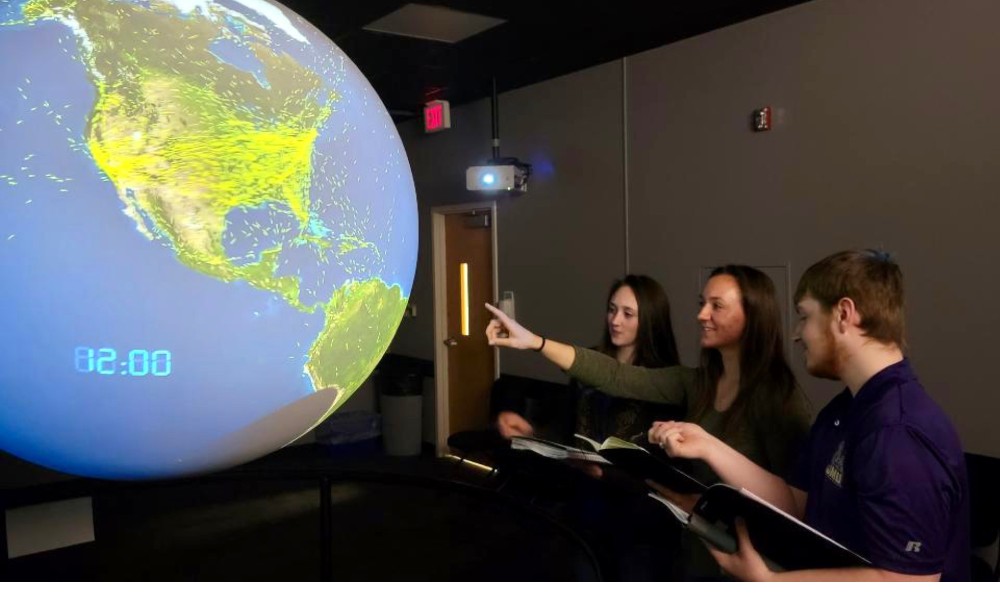ISAT students develop a system to track Unidentified Aerial Phenomena
News
Is it a bird, a plane, or an Unidentified Aerial Phenomena (UAP)?
Also known as an Unidentified Flying Object (UFO), a UAP is “observations of events in the sky that cannot be identified as aircraft or as known natural phenomena from a scientific perspective,” defines the National Aeronautics and Space Administration (NASA).
With a sudden increase in sightings, UAPs have become a hot topic. According to a report by the United States Government, there have been 510 UAP reports as of August 2022. Of these reports, 163 were characterized as “balloon-like entities”, 26 were “unmanned aircraft systems” (drones), and 6 were misidentified as “airborne clutter” [such as plastic bags]. The remaining 171 are “uncharacterized”.
“Among other things, the report concluded that some sightings were real, exhibited technologies different from and superior to publicly acknowledged American Technology, could be a potential security threat, and the sightings should be further studied,” explains Tim Walton, Professor of Intelligence Analysis.
This final point, “sightings should be further studied,” prompted Walton to reach out across disciplines to Chris Bachmann, Professor of Integrated Science (ISAT), to see if any students would like to take on this challenge for their senior capstone project.
Integrated Science and Technology (ISAT) majors Bethany Biggi, Paris Beaver, and Devon Embry answered the call.
"When the Director of National Intelligence makes a formal statement saying that these unknown objects are real, that they have been detected by the most advanced systems in the Department of Defense’s arsenal, and that they do not belong to the United States, you know that this is an important topic and that the stigma surround UFO sightings is changing," says Bachmann.
Under the direction of Walton and Bachmann, Biggi, Beaver, and Embry are building a website that allows civilians to report possible UAP sightings. Reporters can specify the time and location of the sighting, upload videos, and describe the object. Reports would go into a database to be analyzed further.
Beaver believes that for this project to be successful, it is essential to have civilian involvement from people across the country. In addition, the reported sightings will help the team determine if a phenomenon requires the US military's attention.
Walton believes civilian involvement in this project is vital to its success. “The exact numbers are unclear, but sightings by civilians are likely to be more numerous and certainly of wider scope (over land and water) than those by the Navy, he explains. “Moreover, the data collected can be dealt with without revealing any defense secrets.”
“For years, the gun cameras of Navy fighter pilots flying off of aircraft carriers have picked up strange objects behaving in very unusual ways – rapidly accelerating and decelerating, appearing and disappearing, and making abrupt 90-degree turns,” explains Walton. “I served in the Navy between my undergraduate and graduate studies and later worked at the Central Intelligence Agency for 24 years, so this sort of thing catches my attention.”
Bachmann notes that many of the civilian sightings are actually conventional aircraft. For example, atmospheric conditions can cause unusual contrails that catch the viewer's attention; or the sun's angle reflecting off a plane executing a turn causes a bright light that disappears without a trace. “But some of the civilian sightings can't be explained as conventional aircraft - and knowing which ones remain unexplained will greatly help experts focus on which sightings merit further investigation," says Bachmann.
The team will cross-reference the sightings with all known flight path data during the time and location of the sighting to determine if the sighting is a plane or something more serious. “We will display all the possible UAP sightings on a map to see where the sightings may congregate and in which direction they could be moving,” explains Beaver. “This website we are creating will give civilians an idea of the unknown object they reported.”
The students will present their research at the School of Integrated Science Symposium on April 22.
Learn more about the ISAT major.
